Humankind’s adventures through air, land and sea have been powered by ingenious inventions across the millennia. So who could blame us for feeling awed by biplanes, longships and steam trains - innovations that played crucial roles in history, and opened up the world to travellers past? We took a trip down memory lane to admire transport icons that have been lovingly restored to their former glory. Here are some favourites that you can see - or ride in - even today.

A Curtiss JN-4 in takeoff. Image by Bill Larkins / CC BY-SA 2.0
Ever wanted to witness a World War I fighter plane soaring among the clouds? One of aviation’s earliest icons, a 'Jenny' biplane, is taking to the skies this summer to commemorate the centenary of the Great War. Restoring the plane was a 15-month labour of love for teams of builders and community volunteers in Tennessee and Kentucky, with each piece of metal hardware recreated to match the original. The centennial flight will see the biplane cruising up to 200 miles per day and taking in several states, from Wisconsin to Florida.
Find out where you can crane your neck at this reconstructed plane on friendsofjenny.org/events.html.

1943 Douglas C-47A Skytrain 'Dakota', one of very few air-worthy C-47s that served on D-Day. Image courtesy of Return to Normandy
The 70th anniversary of the end of the Second World War has inspired the restoration of another marvel of modern aviation, the Douglas C-47 warplane. The 'Whiskey 7' is set to recreate its crucial role in the Second World War liberation of France this summer. Be there to wave her off on 15 May 2014 at the National Warplane Museum in Geneseo, New York state, at the start of an epic flight to Normandy to commemorate the 70th anniversary of the war’s end. Or head to France where members of the Liberty Jump Team will descend over the original D-Day drop zones.
See more details on 1941hag.org.
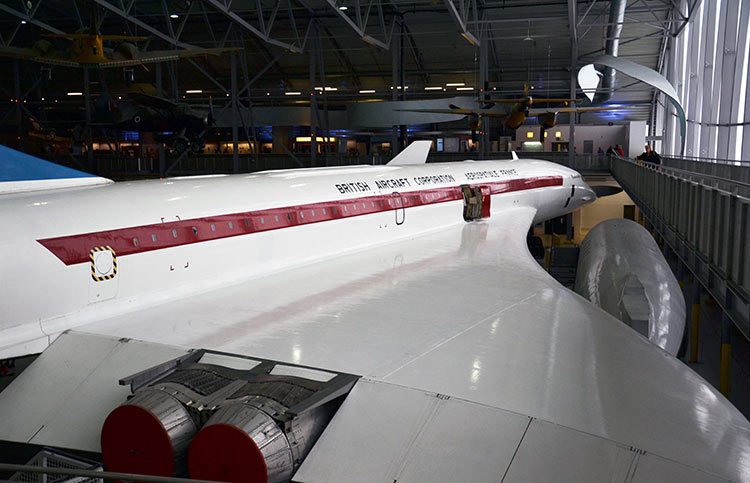
The sleek, unmistakable lines of a Concorde. Image by Jim / CC BY 2.0
Cambridgeshire's Imperial War Museum will also be toasting D-Day with an anniversary air show, but don't miss the civil aviation gems in its expansive collection. The world's only supersonic passenger service may have been retired in 2003, but at Duxford you can step inside a Concorde, pore over the cockpit controls and picture yourself cruising faster than the speed of sound.
Climb aboard a Concorde on iwm.org.uk.

The luxurious rail icon glides into station. Image by storebukkebruse / CC BY 2.0
When the first Express d’Orient train pulled out of Paris’s Gare de l’Est on 5 June 1883, a travel icon was born. Travellers continue to recreate that famous first journey, which whisked passengers from France to Romania and then onwards to Istanbul by ferry. While the true Orient Express made its final overnight journey in 2009, you can travel aboard the restored Venice-Simplon Orient Express, with each vintage carriage telling a unique story. The 24-hour journey from London to Venice via Paris will clobber your bank balance, but can you really put a price on experiencing the golden age of rail travel? (£2,990 return, if you’re wondering.)
Plan your Orient adventure on vsoe.com.

Recreating rail travel's more glamorous days in Victoria, Australia. Image by Stephen Edmonds / CC BY-SA 2.0
In Australia’s lush Dandenong Ranges, a century-old steam train still hisses along its original mountain track. Puffing Billy makes daily journeys from Belgrave to Gembrook, east of Victorian capital Melbourne. Climbing aboard this restored train harks back to a leisurely era of train travel - where riding the rails involved genteel on-board dining (rather than slurping a flat white on a delayed train to Flinders Street).
Immerse yourself in nostalgia over on puffingbilly.com.au.

The blue train which Yugoslav President Josip Broz Tito used to travel across his country. Image by Wikimedia Commons.
Want to race across the beautiful Balkan countryside in a presidential palace on wheels? Former Yugoslav president Tito entertained dignitaries aboard his famous 'Blue Train'; following a restoration of the lavish carriages, it's your turn. Settle into a butter-soft leather seat, sip a glass of lip-tingling plum brandy and admire the Tara Canyon as you rumble from Belgrade to Bar.
Book your place on Tito's train with a little help from The Man in Seat 61.
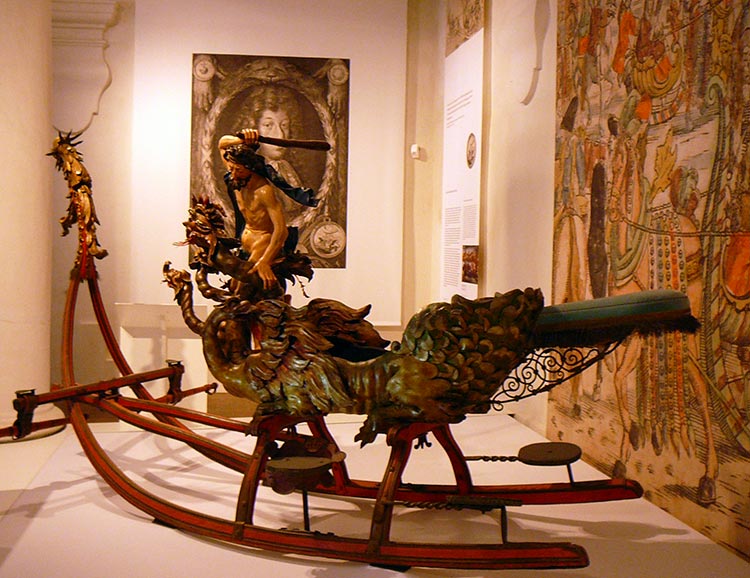
One of the Marstallmuseum's ostentatious sleighs. Image by Anita Isalska / Lonely Planet
Even more decadent modes of transport await at the Marstallmuseum in Munich’s Nymphenburg Palace: gilded chariots, sleighs armed with reindeer antlers, and coaches carved with ample-bosomed maidens. These 18th and 19th century carriages hark back to a lost era of Bavarian royals, who thought nothing of commissioning an army of craftsmen to create a sleigh flanked by dragons.
Embrace these flamboyant modes of transport at schloss-nymphenburg.de.
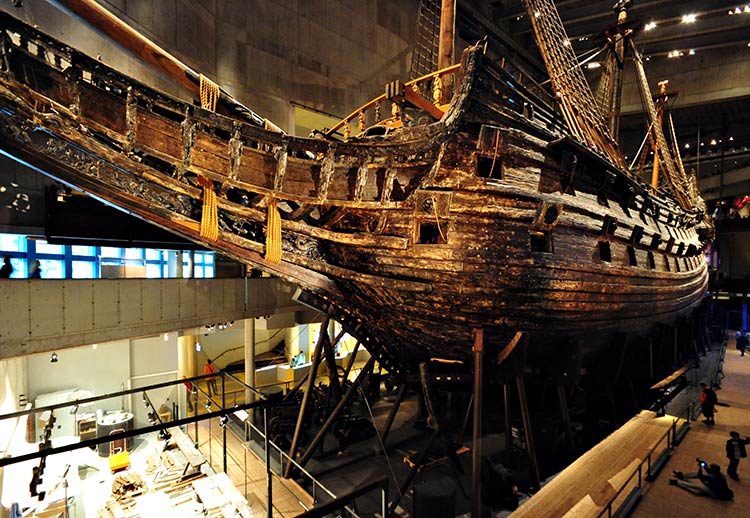
The mighty hull of Sweden's most notorious maritime failure, the Vasa. Image by Tiberio Frascari / CC BY-SA 2.0
Sweden’s maritime history conjures images of fearless Vikings and mastery of the seas. But the Vasa is best known for a colossal failure - she sank on her maiden voyage in 1628. The Vasa was the most powerful warship the world had ever seen because of the incredible weight of shot, more than 300kg, that could be fired from one side of the ship. Unfortunately this top-heaviness ensured she met a watery grave after sailing a mere 1300m out of port - the wreck was only retrieved in 1961. As the world’s only preserved 17th-century ship, the Vasa and the objects found inside continue to illuminate our understanding of Sweden’s history - if not the best way to construct a warship.
Visit the ill-fated vessel at the Vasamuseet (vasamuseet.se).
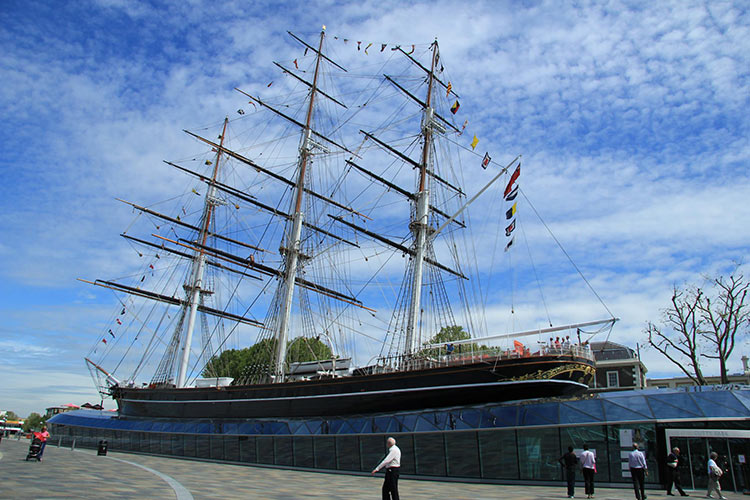
Finally at rest after circumnavigating the globe, the Cutty Sark beguiles visitors to Greenwich, London. Image by Karen Roe / CC BY 2.0
Long ago when Britannia ruled the waves the Cutty Sark navigated turbulent seas to visit almost every major port in the world. The clipper smashed records, in 1884 sailing from Sydney to London in 83 days (nearly a month faster than rivals), and soon trimming a further 10 days from the passage time. The vessel was thought unstoppable, trading as far and wide as Rio de Janeiro, New Orleans, Mozambique and Angola, before returning to England as a cadet training ship. Finally it was displayed in Greenwich, London, among the city’s most popular attractions. Brits were broken-hearted when a fire damaged the preserved ship, but a grand reopening in 2012 has returned the Cutty Sark to its former glory.
Set sail on rmg.co.uk/cuttysark.
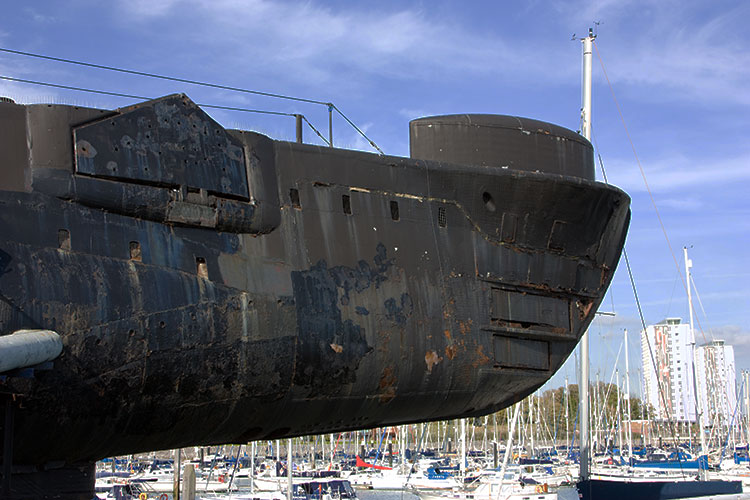
Want to step inside a WWII submarine? The HMS Alliance is visitable by guided tour. Image by Nick Hubbard / CC BY 2.0
If the idea of life on the ocean wave doesn’t appeal, what about the world beneath? The grand reopening of the HMS Alliance, a restored World War II era submarine, allows tours inside the vessel - as well as the chance to peer through the periscope at Portsmouth harbour. The black behemoth is the star attraction of a multimillion-pound project to explore the British Royal Navy’s history, along with exhibitions at the National Museum of the Royal Navy at Portsmouth's Historic Dockyard.
Would-be submariners can plan their visit on submarine-museum.co.uk.
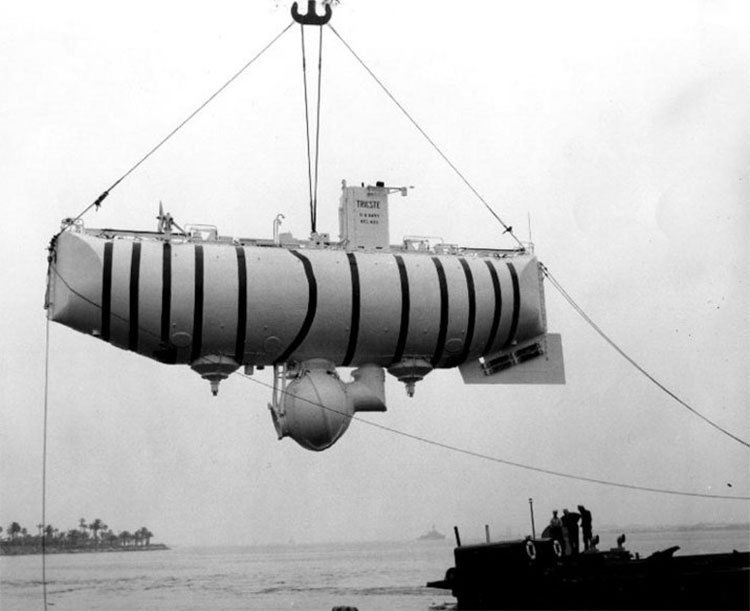
Bathyscaphe Trieste is hoisted out of the water in a tropical port, circa 1958-59, soon after her purchase by the Navy. Image by Wikimedia Commons
Want to go even deeper? This record-breaking submersible took a crew of two 10,911m deep into the Earth’s deepest known seabed, the Challenger Deep. Even today scientists know more about the surface of the moon than they do about the deep sea, so the Bathyscaphe Trieste’s journey into the unknown in 1960 was a feat beyond daring. The vessel has been carefully preserved to fire the imaginations of a whole new generation of undersea explorers.
Take the plunge at Washington, DC’s US Navy Museum (history.navy.mil).
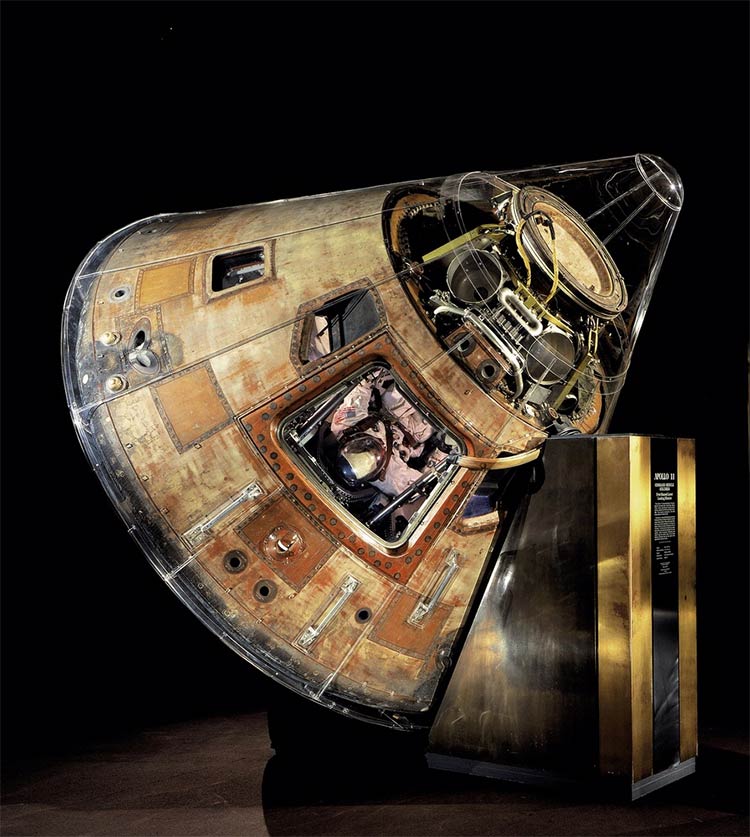
Apollo 11 command module Columbia. Photo by Eric Long, National Air and Space Museum, Smithsonian Institution. Used with permission
With Virgin Galactic offering pleasure flights to the edge of the atmosphere, space travel has never seemed so tantalisingly possible. If you’re still saving up for your place in space, boldly go to the Smithsonian National Air and Space Museum and see where it all began. Preserved for posterity here is the Apollo 11 Command Module, ‘Columbia’, living quarters for the astronauts during the first lunar landing in July 1969, and the only part of the spacecraft that returned to Earth. Could anything be more inspiring to a traveller than knowing that the sky is not the limit?
Send your imagination into the stratosphere at airandspace.si.edu/collections.